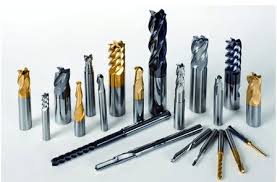With the rapid development of woodworking manufacturing and custom home furnishing industries, Woodworking Router Bits have become essential tools, attracting unprecedented attention due to their performance and versatility. From furniture production to intricate carving, the choice of router bits directly affects machining efficiency, precision, and the aesthetic quality of the final product. This article explores the latest trends and practical applications in the industry from three dimensions: bit types, material selection, and size and cutting depth.
1. Bit Types and Functional Diversity
Woodworking Router Bits come in a wide variety, each designed for specific machining needs:
| Bit Type |
Primary Use |
Machining Features |
| Straight Bits |
Grooves, mortises, flat cuts |
Smooth cutting, suitable for deep cuts |
| V-Groove Bits |
Carving, decorative lines |
Achieves precise V-shaped patterns |
| Chamfer Bits |
Edge decoration, chamfering |
Enhances aesthetics, prevents sharp edges |
| Roundover Bits |
Rounding edges, smoothing |
Improves tactile and visual appeal |
Current market trends indicate a growing preference for multi-functional bits. One bit capable of multiple cutting types not only improves efficiency but also reduces workshop inventory costs.

2. Material Selection: High-Speed Steel vs. Carbide
The material of a router bit directly affects its durability, cutting precision, and suitable applications. The main materials are:
1.High-Speed Steel (HSS) Bits
Advantages: Lower cost, suitable for light use, easy to sharpen and maintain.
Disadvantages: Less wear-resistant, dulls faster under heavy use, not ideal for hardwoods.
Typical Applications: Softwood, plywood, occasional DIY projects.
2.Carbide Bits
Advantages: High hardness and wear resistance, maintain sharpness over long periods, ideal for high-speed cutting.
Disadvantages: Higher price, requires precise machine setup.
Typical Applications: Hardwoods (oak, walnut), laminated boards, mass production.
Recommendation: If budget allows, prioritize carbide bits, especially for hardwood or frequent use. HSS bits can serve as backup or for practice. Material choice should be balanced with processing needs, wood type, and production volume. For large-scale furniture production, carbide bits are more cost-effective in the long run despite the higher initial investment.
3. Bit Size and Cutting Depth Configuration
Bit diameter and cutting depth significantly influence machining quality and wood grain integrity:
Diameter Selection: Larger diameters are suitable for deep grooves or edge processing, while smaller diameters are ideal for detailed carving and intricate patterns.
Cutting Depth: Adjust according to wood thickness and grain direction to prevent cracking from overly deep cuts.
Feed Rate and Speed Matching: Larger bits should use lower feed rates to ensure smooth cutting; smaller bits can operate at higher speeds to improve efficiency.
Practical Tips and Safety Advice:
Secure the workpiece with clamps or double-sided tape to prevent shifting and cutting errors.
Layered Cutting: For deep grooves, cut in 2–3 passes to reduce tool overload.
Speed Adjustment:
Large bits (>25mm) → lower RPM (12,000–18,000)
Small bits (<12mm) → higher RPM (20,000–24,000)
Regular Cleaning: Resin buildup affects cutting performance; use dedicated cleaners or acetone to clean the bit.
4. Applications and Industry Trends
In recent years, Bits have been widely applied in:
Custom Furniture
Precise edge chamfering and groove cutting enhance structural strength and visual appeal.
Fine Carving and Decoration
Decorative lines and relief patterns add high value to home furnishing products.
CNC Machining
CNC routers with high-precision bits enable mass production and intricate pattern processing.
Industry trends indicate that intelligent machining, wear-resistant coatings, and multi-functional bits will become core directions for future development.
5. Industry Recommendations and Standardized Management
To ensure production efficiency and product quality, enterprises can adopt the following strategies when using Bits:
| Bit Type |
Material |
Lifespan (hours) |
Recommended Materials |
Notes |
| Straight Bits |
HSS |
20–40 |
Softwood, plywood |
Standard processing |
| V-Groove Bits |
Carbide |
100+ |
Hardwood, composite board |
Fine carving |
| Chamfer Bits |
Carbide |
80–120 |
Various woods |
Various woods |
| Roundover Bits |
Carbide |
90–150 |
Hardwood, MDF |
Hardwood, MDF |
Regular Maintenance: Keep bits sharp and free of debris or resin buildup.
Processing Records: Track usage and cutting parameters to optimize batch production and predict tool lifespan.
As core tools in the woodworking industry, Woodworking Router Bits play a crucial role in machining efficiency and product quality. Looking ahead, with the rise of intelligent manufacturing and high-precision demands, the industry will increasingly trend toward multi-functional, wear-resistant, and smart bits. Enterprises should continuously optimize bit selection, management, and application to meet the growing diversity of market requirements.








